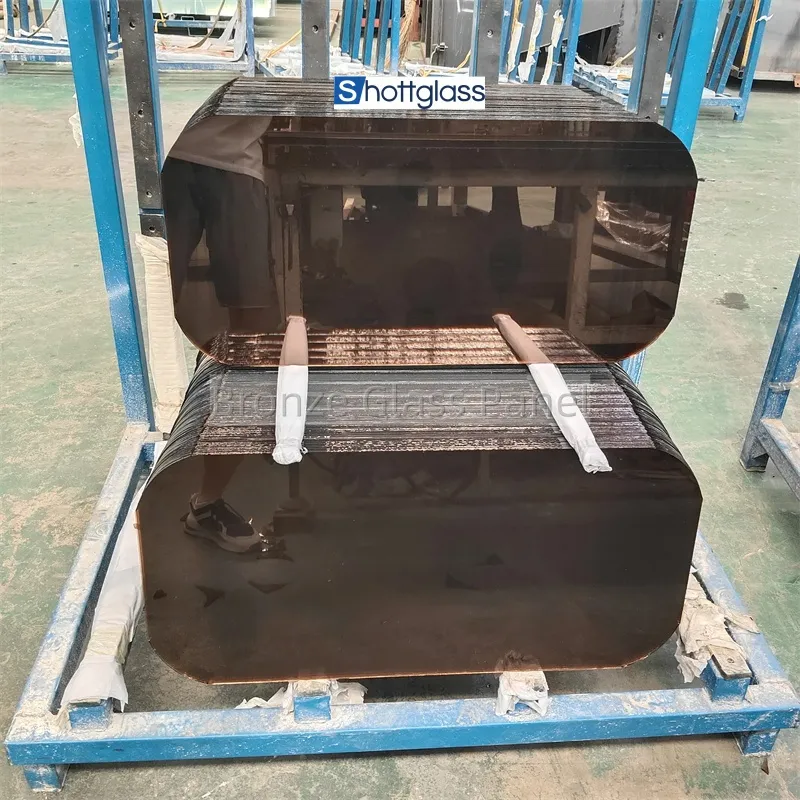Nov . 07, 2024 20:20 Back to list
Leading Manufacturers in the Flat Glass Industry and Their Innovations
The Flat Glass Manufacturing Industry An Overview
The flat glass manufacturing industry is a crucial segment of the broader glass production sector, responsible for producing glass that is flat, smooth, and typically used in windows, doors, mirrors, and various architectural applications. This industry has seen significant advancements over the years, driven by technological innovations and increasing demand across diverse sectors such as construction, automotive, and appliance manufacturing.
Market Demand and Applications
The demand for flat glass is predominantly driven by the construction sector. As urbanization continues to rise globally, the need for residential and commercial buildings has surged, directly impacting the flat glass market. Flat glass is essential for energy-efficient windows, facades, and skylights, contributing to aesthetic design and functionality. The automotive industry also plays a vital role; cars and other vehicles utilize flat glass for windshields, windows, and mirrors, ensuring safety and clarity for drivers and passengers alike.
In addition to construction and automotive uses, flat glass is utilized in various appliances, including refrigerators, ovens, and washing machines. With the increase in smart home technology, where glass surfaces are often integrated with electronic displays, the demand for high-quality flat glass is expected to grow further.
Manufacturing Processes
The manufacturing of flat glass involves several key processes. The most common method used is the float glass process, which was developed by Sir Alastair Pilkington in the mid-20th century. In this process, molten glass is floated on a bed of molten tin, resulting in a smooth, flat surface. This method allows for the production of glass with uniform thickness and high optical clarity.
Other techniques such as sheet glass, drawn glass, and rolled glass processes are also used, though they are less common today. Each method has its specific applications and advantages depending on the desired end product.
Once the glass is formed, it undergoes various treatments to enhance its properties. These treatments can include annealing, tempering, and laminating, which improve the glass's strength, thermal stability, and safety. Innovations such as low-emissivity (Low-E) coatings further enhance energy efficiency, making products more attractive to environmentally-conscious consumers and businesses.
Challenges in the Industry
flat glass manufacturers

Despite the robust growth and demand in the flat glass market, manufacturers face several challenges. The industry is highly competitive, with numerous players vying for market share. Price fluctuations in raw materials, especially silica sand, soda ash, and limestone, can significantly impact production costs. Furthermore, adherence to environmental regulations and sustainability standards is increasingly becoming a concern, as manufacturers must invest in cleaner technologies and processes to reduce their carbon footprint.
The labor-intensive nature of glass fabrication poses another challenge. Skilled labor shortages can lead to production delays and increased costs, necessitating investments in workforce training and development.
Environmental Impact and Sustainability
In recent years, sustainability has emerged as a crucial focus within the flat glass manufacturing industry. The production process of glass is energy-intensive, and efforts to reduce energy consumption are becoming imperative. Many manufacturers are embracing recycling practices, utilizing recycled glass as a raw material, which not only conserves energy but also reduces landfill waste.
Furthermore, developments in energy-efficient glass technologies, such as solar control glass and self-cleaning glass, showcase the industry's commitment to sustainability. These products not only enhance the energy efficiency of buildings but also contribute to creating a greener environment.
The Future of Flat Glass Manufacturing
Looking ahead, the flat glass manufacturing industry is expected to continue evolving, driven by ongoing technological advancements and rising consumer demands. Innovations in digital printing technologies and smart glass applications are likely to shape the future of the industry, offering manufacturers new avenues for growth.
As the trend toward sustainable building practices strengthens, flat glass manufacturers are positioned to play a crucial role in delivering innovative solutions that meet the needs of a rapidly changing world. From energy-efficient windows to advanced automotive applications, the flat glass industry will remain at the forefront of modern manufacturing, meeting both functional requirements and aesthetic preferences.
In conclusion, the flat glass manufacturing industry represents a vital component of our infrastructure and daily lives, with its products permeating various aspects of the built environment. As it adapts to new challenges and opportunities, the sector is poised for continued growth and innovation in the years to come.
-
Safety and Style with Premium Laminated Glass Solutions
NewsJun.24,2025
-
Reinvents Security with Premium Wired Glass
NewsJun.24,2025
-
Premium Float Glass Line for Modern Architecture
NewsJun.24,2025
-
Low Emissivity Glass for Energy-Efficient Architecture
NewsJun.24,2025
-
High-Performance Insulated Glass Solutions for Modern Architecture
NewsJun.24,2025
-
Elevates Interior Style with Premium Silver Mirror
NewsJun.24,2025
Related PRODUCTS














